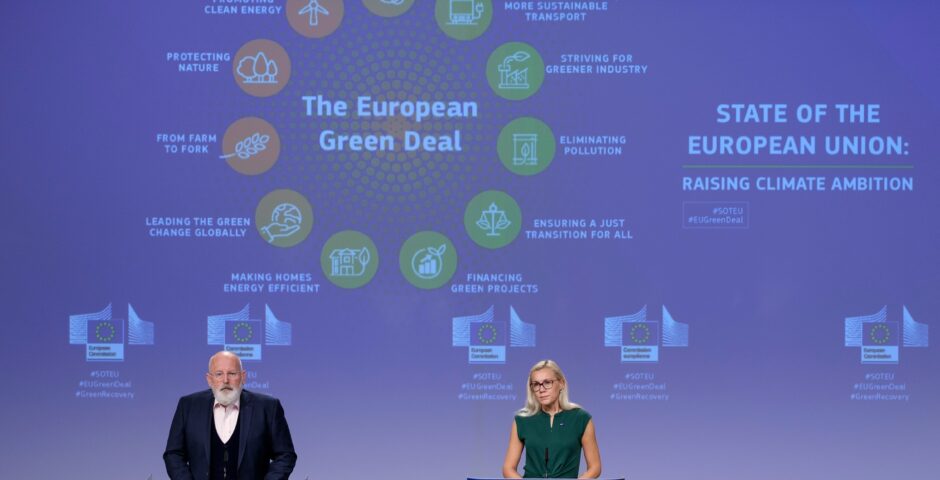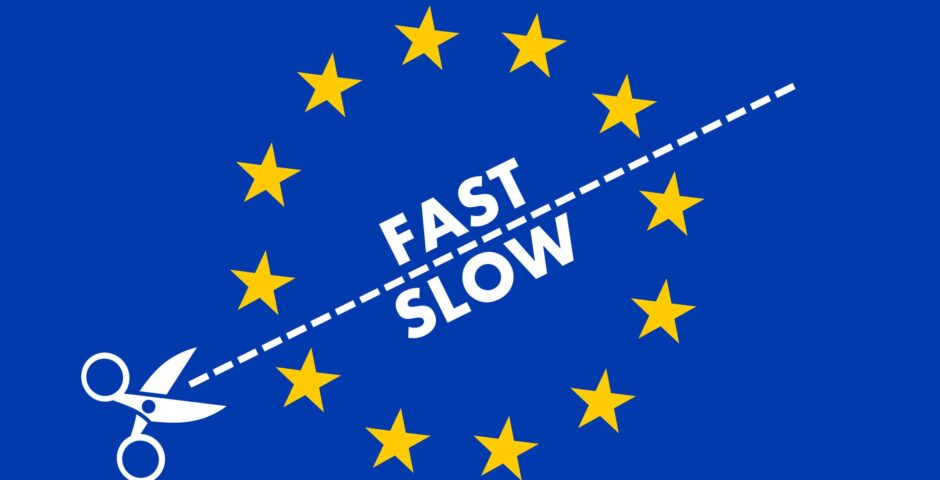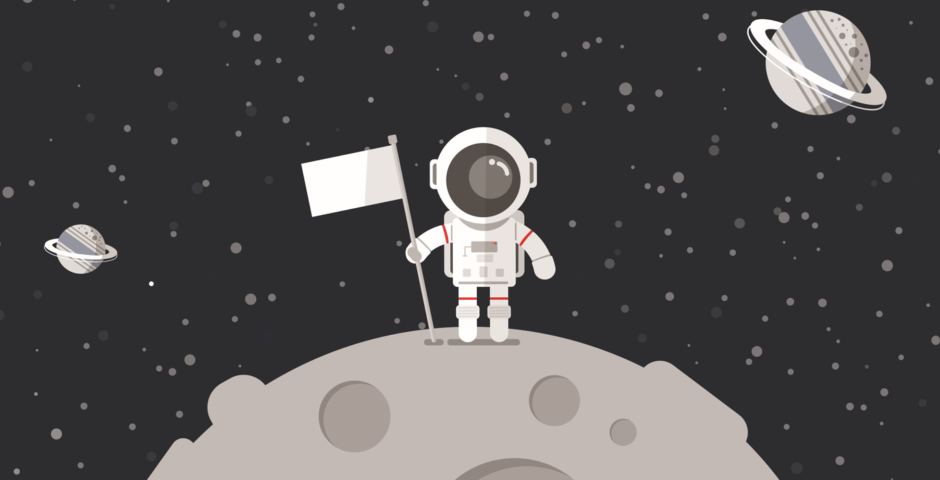A new European economy

How a circular economy is going to change Europe’s economic future
The economy must grow every year. That is the mantra that generations have grown up with. When you have economic growth, a country is doing well. Economic growth is expressed in terms of GDP, the Gross Domestic Product. This figure is the sum of all goods and services that a country produces. So the more you produce, the better a country is doing on paper. Originally used during the Second World War by the USA, this indicator was used to measure the production of ammunition, arms, ships, food, etc. Everything that was needed in order to pursue (and win) a war. After WWII, GDP has remained in use and it is still an integral part of our economic view of the world.
There is only one problem with an economy that can only do well by growing continuously: nothing can grow forever. The inescapable conclusion is that such a system will eventually run out of room to grow. We will either run out of materials, manpower, or both which are needed to keep making more and more products. This moment has only been brought closer by the current issues surrounding the shortages of resources and materials. We want to work towards a world without plastic, we want to get rid of gas on a massive scale and we want to make less use of the scarce materials that the Earth has to offer us. At the same time, we want to continue to reap the benefits of a growing economy. But how do you ensure that your economy continues to grow while at the same time using less and less input to feed the current system? And if you decide to keep growing without toning down, how much Earth will be left to live on in the future?
Towards another economic model
These questions have also started to enter political and scientific space. A growing number of politicians and scientists are convinced that we should move away from an economy based on production and look for a healthier alternative. Economist Kate Raworth, for example, has developed the concept of the ‘doughnut economy’. A system in which the social and economic needs of people can be realised without stepping over the boundaries of Mother Earth: the economy must be organised in such a way that it remains (like the shape of a doughnut) between the boundaries of what we need and what we can ask of the planet.
In addition to the doughnut economy, dozens of other economic models have been created that focus on the ecological and social necessities needed for a sustainable life. One of these ideas in which economic, ecological and social needs can coexist is the circular economy; one of the pillars on which the European Green Deal rests.
For those who would like to know more about what a circular economy is, please read my first article on the subject where I elaborate on what circularity entails. The article concludes that the European Union has embraced the circular economy as the answer to the problems we face with the current linear economic system. But how did this come about? And what will this circular transition change for European citizens in years to come?
Europe’s circular timeline
Europe’s circular story can be traced back to 2011 when the ‘Roadmap for a Resource-Efficient Europe’ was published. The aim of the plan was to make the European economy sustainable by 2050. The word ‘circularity’ was not yet mentioned, but one of the key points of the plan is to decouple economic growth from the use of raw materials; one of the main characteristics of circularity. This may give you the impression that the EU was an early frontrunner in the sustainability story, but the truth is slightly different.
The main reason why the EU wanted to decouple economic growth from the use of raw materials was not so much sustainability as dependency. Most raw materials such as oil and gas are imported from outside the EU, and after the economic and credit crises of 2008 and 2009, the Commission was not very enthusiastic about the fact that the engine of the European economy could be slowed down by a lack of raw materials coming in from external countries. Especially since most of the supply comes from countries with which the bloc has not always had the best relations, such as Russia. An economy that relies less on raw materials is less dependent on shocks from outside, was the reasoning. The current rise in gas prices and the problems surrounding Nord Stream 2 once again demonstrate how raw materials can slow down an economy that is heavily dependent on them to function.
With the publication of the Roadmap, the European Commission launched the European Resource Efficiency Platform, bringing together experts from both the public and private sectors to advise on what the new EU economic model should look like. Former Irish Prime Minister John Bruton, OECD climate director Simon Upton and former Unilever CEO Paul Polman, among others, were present along with an array of European Commissioners, MEPs, academics and representatives of business and NGOs. Their policy recommendations were published in 2014 and they concluded that if the EU wants to increase the competitiveness of its industry and maintain a high quality of life for European citizens, the use of natural resources must be cut in half by 2030. The only way to achieve this, according to the Platform, is to move towards a circular economy.
The Platform’s proposals were adopted by the Barroso Commission and they introduced the Circular Economy Package in the same year. This package contained plans for the reduction of waste, sustainable building, sustainable entrepreneurship and a better food industry. The plan could count on a lot of resistance from European industrial sectors and was seen as too far-reaching. The ambition to introduce EU-wide recycling quotas was especially a hot topic in 2014. When a new Commission emerged under the leadership of Claude Juncker, the plan was shelved because it did not fit the ambitions of the new Commission.
That decision, in turn, was also met with much criticism, mainly from MEPs, member states and NGOs. They were unanimous in their opinion that Juncker’s Commission should pay as much attention to sustainability and climate protection as to jobs and economic growth. This put so much pressure on the Commission that they decided to research the possibilities of making Europe’s economy circular. The Vice-President of the European Commission, Frans Timmermans, was given the lead to develop this circular strategy. Finally, in December 2015, the first Circular Economy Action Plan (CEAP) was published. This plan contained 54 concrete actions to be taken between 2015 and 2019 and included actions in the areas of production, consumption, food waste, waste management, plastics, raw materials, biomass, innovation and sustainable financial investments.
The implementation of the plan is generally considered a success: the EU’s circular activities managed to add €155 billion in value to the European economy in 2017. A new Circular Economic Action Plan emerged quickly with the arrival of the current EU Commission led by Ursula von der Leyen. More than in previous Commissions, the policy is focused on sustainability. Von der Leyen said the following during the presentation of the European Green Deal on 14 July 2021:
‘We know that our current fossil fuel economy has reached its limits. And we know that we have to move to a new model – one that is powered by innovation, that has clean energy, that moves towards a circular economy’.
The current circular strategy
So what does the current Commission have planned for Europe in terms concerning a circular economy? In March 2020, the new plan was presented under the title ‘Circular Economy Action Plan for a Cleaner and More Competitive Europe’’. The emphasis of the plan, according to the Commission, is on the protection of natural resources and the creation of sustainable economic growth. In total, 35 actions were introduced to be implemented in cooperation with businesses, consumers and civil society under the motto: we can only achieve these goals together.
The first thing the new CEAP aims to do is the creation of a policy framework for sustainable products. It wants to increase the lifespan of products by introducing new guidelines and rules at every point of the production process. From the design phase to the landfill, the goal is to keep products in circulation as long as possible and, when this is no longer possible, to reuse them as well as possible. For example, product designers are obliged to consider what will happen to the product they come up with as soon as it hits the trash. At the end of the life cycle, far-reaching plans are introduced to minimise material wastage under the slogan ‘less waste, more value’. One of the strategies that the Commission intends to use for this purpose is to help set up a market for recycled materials so that producers and buyers have easier access to them.
A number of industries are given a special approach to adjust to the circular economic plan; this includes electronics and IT, batteries and vehicles, packaging, plastics, textiles, construction and the food industry. They have been singled out as special industries that will receive specific legislation and directives due to a combination of their size and importance to the European economy and their relatively large contribution to pollution. In addition, the EU is also going to give more guidance on a circular economy by contributing to Research & Development, financing circular initiatives, promoting the circular economy model outside the EU and creating a better system for monitoring the development of a circular European economy.
How will this affect me?
Introducing a new economic system is no small undertaking, and in the coming years you and I are going to feel the outcomes of that transition. Firstly, consumers will have more rights when it comes to the products they buy. If you buy something in a shop now, you have a two-year statutory warranty on the product. This means that if it breaks down within two years of purchase (through no fault of your own, of course), you will get a replacement product. The Commission wants to expand this right further by adding a so-called ‘repair right’. When something breaks, even after the warranty expires, you as a consumer should have the right to have it repaired. This prevents you from having to buy something new ‘unnecessarily’ and saves material consumption and the emissions involved in the production of a replacement. This is completely at odds with the way the current economy is organised, where the focus is on the highest possible sales volumes.
Consumers must also be better protected against a phenomenon called ‘greenwashing’. Greenwashing means that products are called green or sustainable without actually being so. By introducing legal criteria and sustainability labels, the EU hopes to better inform European consumers about what they are buying. Both proposals focus on extending consumer law.
Additionally, there are a number of developments underway that will indirectly have an impact on everyday life. The first of these is already noticeable and is the ban on the sale and use of disposable plastics such as straws and cutlery. In a few years’ time, government bodies, from the national to the local level, will also be obliged to make all their public tenders circular. This means that if your local authority needs new office chairs, in the future they can only buy them from a circular company. The EU hopes that these extra investments will lead to a growth of the circular sector and that private companies will voluntarily take the same step. When you consider that government spending accounts for 14% of the total European economy, that is not so bad. In this way, circular products and services should also become more accessible to ordinary consumers in the future.
The European Commission is pushing hard for a circular future through a combination of stricter legislation and better consumer protection. It remains to be seen whether all ambitions can actually be implemented. Sustainability, despite the fact that the need for it is becoming increasingly clear, remains a subject that is still heavily lobbied over in Brussels. Nevertheless, the goal of having a complete circular economy within the European Union by 2050 is coming closer bit by bit. However, it remains to be seen whether all targets will actually be achieved.
Linda den Bol graduated in history at Radboud University and obtained a dual-degree master’s degree in European Governance from Masarykova Univerzita and Utrecht University.
Featured image: Shutterstock




